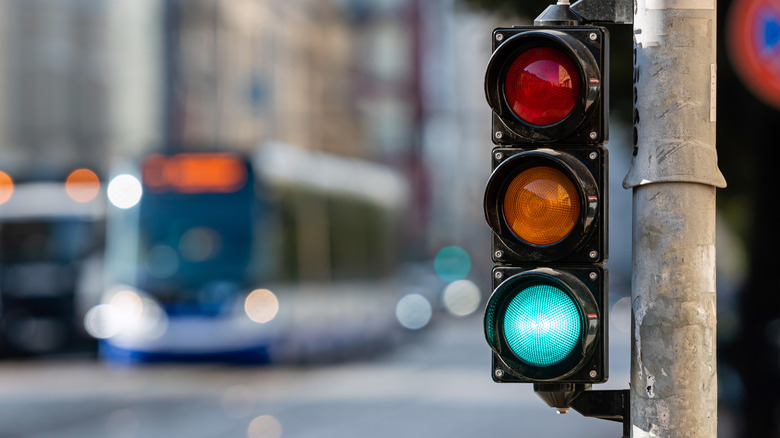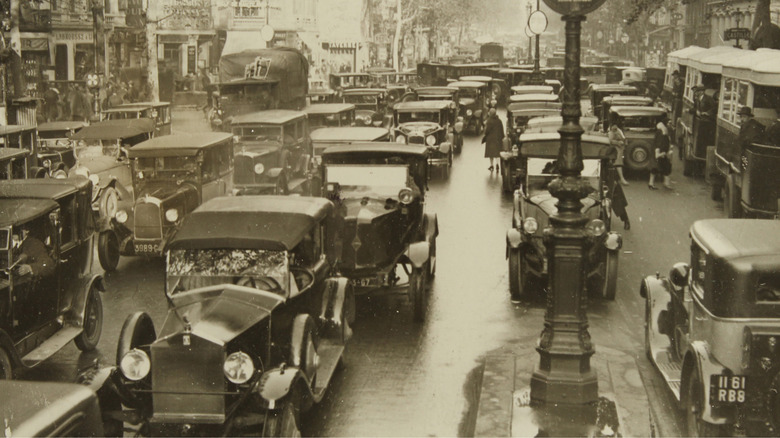Who Invented The Traffic Light?
We have a lot of people to thank for the modern-day traffic light. Across a century dominated by cars, traffic signals have been tweaked and changed and overhauled into their most recognizable red-yellow-green configuration. In the 20th century, American engineers patented automated signals, electric lights, and pedestrian walkway signs — all standard fare today.
But the need for traffic signals actually predates the automobile, and the first person to implement the basic idea for such a utility on the road did so more than 150 years ago at a British intersection. As cities initially built with smaller roads got more and more crowded, engineers and urban planners were faced with a new problem: alleviating pedestrian and carriage congestion. The solution to those traffic jams came not from an early car aficionado, but from a railway manager named John Peake Knight. Yet when an accident injured a police officer, the implementation of his invention was postponed for decades (via LiveScience).
Inspiration from the railways
A lifelong train lover, Knight actually dropped out of grade school to work the rails, becoming a superintendent for London's capital railway by 25. By his mid-thirties, Knight was familiar enough with the flow of locomotives to recognize that their existing rail signals could be used on the capital streets. At the time, rail signals in London were large poles with articulating arms and lights that would tell trains to stop or go. In 1865, in the more pungent days of live horses ferrying people around town, Knight proposed to the city's police commissioner an idea for a similar sign.
Knight's traffic sign, the world's first, was installed at the crossing of Bridge Street and Great George Street in December 1868, right near the House of Parliament. According to the BBC, the project was a success, with Knight anticipating much wider adoption throughout the city. However, in the mid-19th century, these signs were not machine-operated. A police officer had to stand by and manually switch signs to manage the traffic, and a gas lamp would help riders and pedestrians see the signals at night.
When a sign's lamp exploded from a gas leak just a month after its installation, the officer operating it was injured and the project was put on hold for good. Other inventors wouldn't take a stab at the idea until the earliest years of the 20th century, when the traffic light came into its own as a standard on roads around the world.

